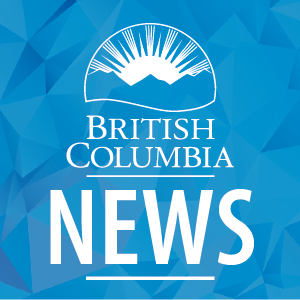- The natural gas and oil industry invested over $5 billion in exploration and development activity in B.C. in 2013.
- Water is used in many oil and gas activities, from routine drilling to advanced recovery techniques such as hydraulic fracturing.
- Hydraulic fracturing requires varying amounts of water (generally for one-time use) over the lifespan of a well. The water comes from surface and fresh groundwater sources, deep saline aquifers, municipal wastewater and recycling flowback and produced water.
- Four geological basins in B.C. are recognized sources of shale and tight gas (Cordova Embayment, Liard Basin, Horn River Basin and Montney).
- The majority of exploration and production is in the Montney and Horn River basins, with minimal production in the Cordova Embayment. The Liard Basin is in the early stages of exploration.
Water Use in Natural Gas and Oil Production
- Although 45.9 million cubic metres of water was allocated to the oil and gas sector in Northeast B.C. for 2014, much less water was actually used. In the 2014 calendar year, the reported water use was about five million cubic metres.
Water Stewardship Strategies
- Provincial laws govern how the gas and oil industry must protect water resources during drilling and production:
- The BC Oil and Gas Commission is authorized to suspend water use by industry. This occurred during droughts in northeast B.C. in 2010, 2012 and 2014.
- A public disclosure registry for hydraulic fracturing additives, www.FracFocus.ca, was launched in early 2012. It provides site-specific information about hydraulic fracturing and water management related to shale gas development.
- Water permits and water licences for natural gas and oil industry use are approved by the BC Oil and Gas Commission under the Water Act.
- Water used in the hydraulic fracturing process is prohibited from being introduced into surface water sources (i.e. lakes and streams) or near surface aquifers that are used to supply drinking water. The water must be recycled, used for further gas extraction or injected deep into subsurface formations through a regulated water disposal well. Companies are required to report all water produced including flow-back fluid.
- The Northeast Water Tool tracks watershed volumes and industry use in northeast B.C. and supports the decision-making process for water use permits and licences: http://www.bcogc.ca/public-zone/northeast-water-tool-newt
- The industry has installed monitoring stations for measuring water quality and water quantity. Individual oil and gas operators are using large-scale water conservation practices and also looking for ways to reduce freshwater consumption or use alternative water sources such as:
- recycled hydraulic fracturing flowback water
- non-potable saline water from deep wells
- recycled municipal waste water
- nitrogen or carbon dioxide
Further information about water use in the oil and gas sector can be found in:
- Water Use for Oil and Gas Activity, 2013 Annual Report: www.bcogc.ca/node/11262/download
- Quarterly Oil and Gas Water Use Summary, 2014: www.bcogc.ca/node/12261/download
Media Contact:
Media Relations
Ministry of Forests, Lands and Natural Resource Operations
250 356-5261


